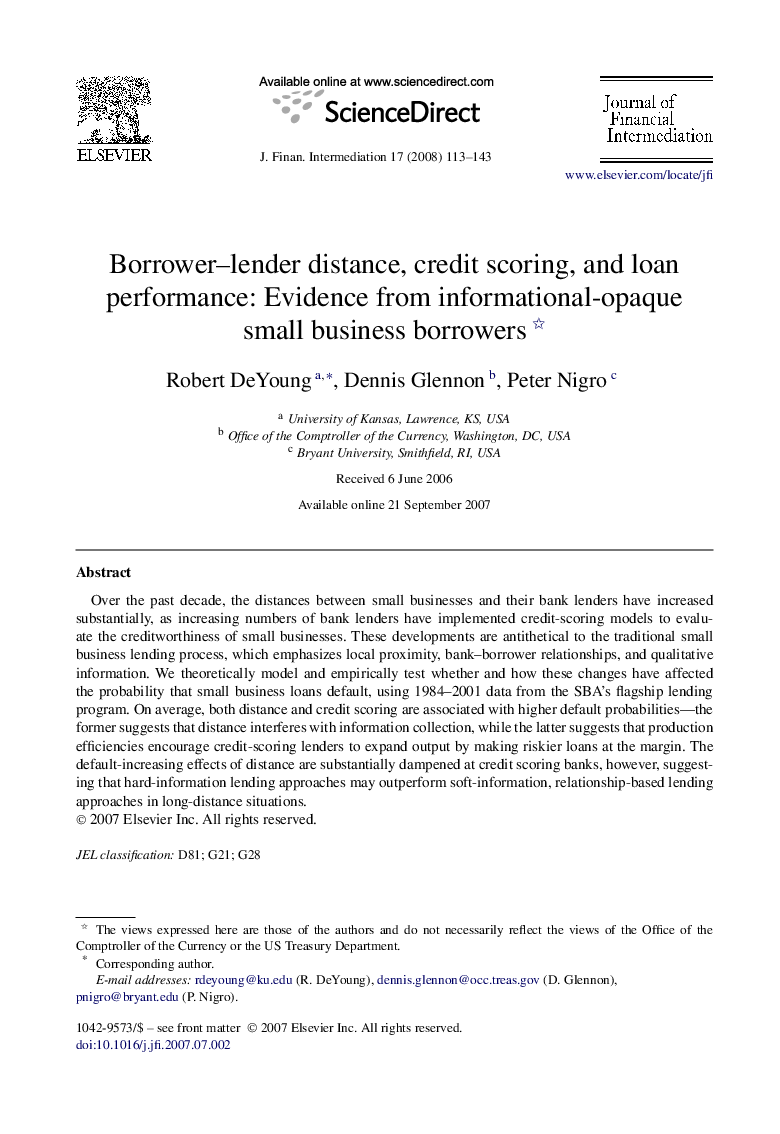| Article ID | Journal | Published Year | Pages | File Type |
|---|---|---|---|---|
| 961143 | Journal of Financial Intermediation | 2008 | 31 Pages |
Abstract
Over the past decade, the distances between small businesses and their bank lenders have increased substantially, as increasing numbers of bank lenders have implemented credit-scoring models to evaluate the creditworthiness of small businesses. These developments are antithetical to the traditional small business lending process, which emphasizes local proximity, bank-borrower relationships, and qualitative information. We theoretically model and empirically test whether and how these changes have affected the probability that small business loans default, using 1984-2001 data from the SBA's flagship lending program. On average, both distance and credit scoring are associated with higher default probabilities-the former suggests that distance interferes with information collection, while the latter suggests that production efficiencies encourage credit-scoring lenders to expand output by making riskier loans at the margin. The default-increasing effects of distance are substantially dampened at credit scoring banks, however, suggesting that hard-information lending approaches may outperform soft-information, relationship-based lending approaches in long-distance situations.
Related Topics
Social Sciences and Humanities
Business, Management and Accounting
Strategy and Management
Authors
Robert DeYoung, Dennis Glennon, Peter Nigro,
